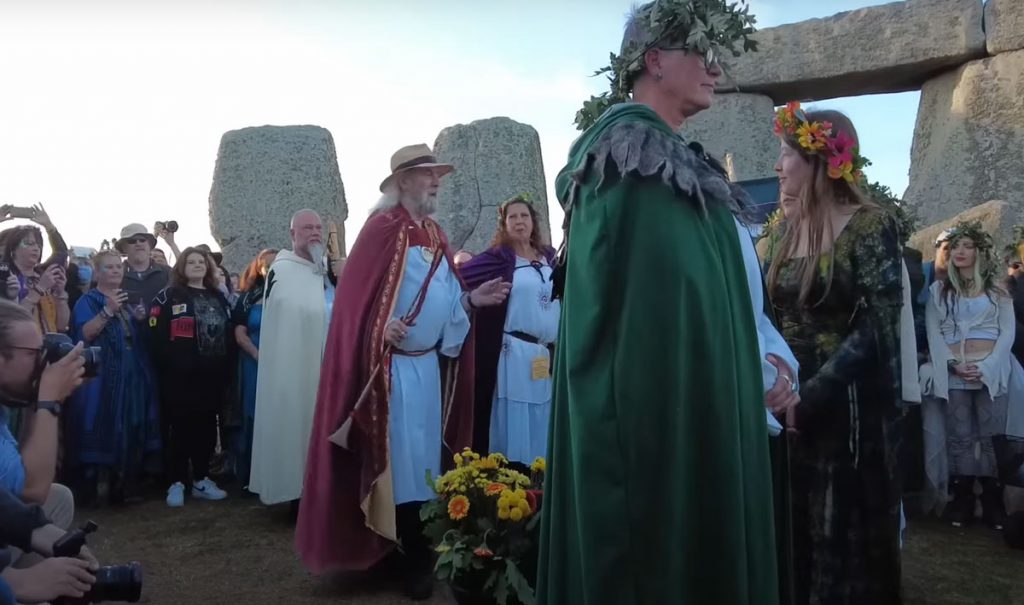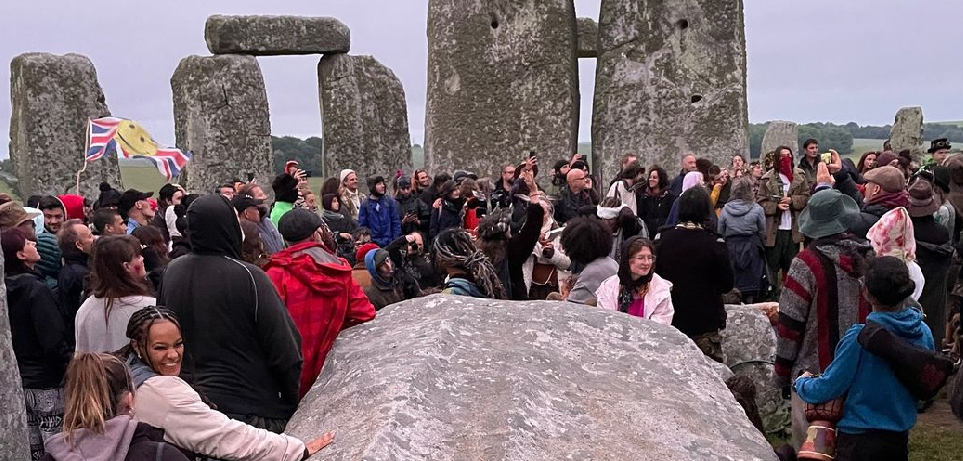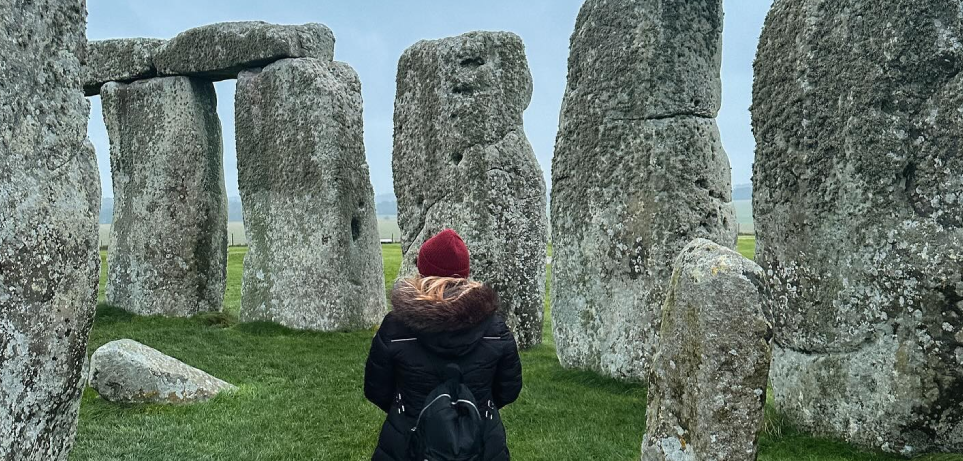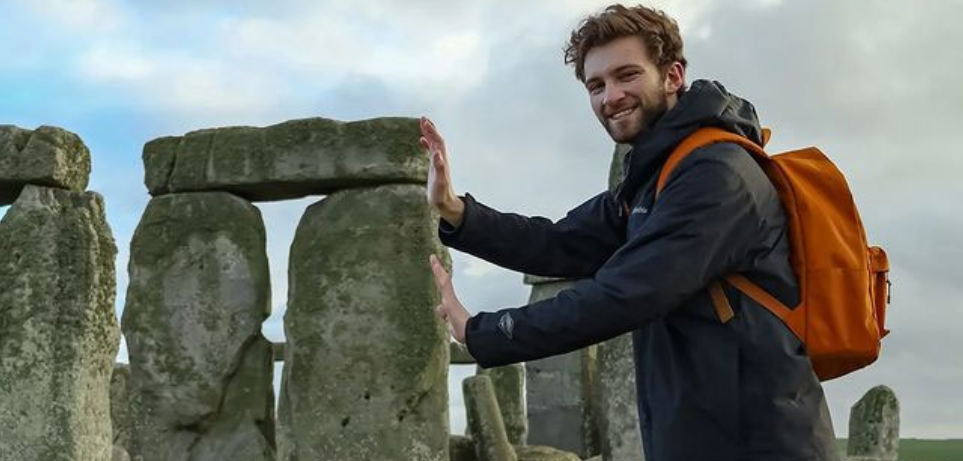A Guide To Touching the Stones at Stonehenge
Can You Touch the Stones at Stonehenge?
In most cases, no — visitors are not allowed to touch the stones at Stonehenge.
Access to the stone circle is strictly controlled to protect the monument, and standard daytime tickets only allow viewing from a set distance.
However, there are limited and legitimate ways to touch the stones. This is only possible during special access visits, such as early-morning or evening inner-circle experiences, private tours, or on specific ceremonial dates like the summer and winter solstices. These visits are carefully managed and must be booked in advance.
Touching the stones is not part of a normal visit, and rules are enforced by English Heritage to prevent damage to the monument. For most people, getting close enough to touch the stones is a once-in-a-lifetime experience — but understanding when it’s allowed (and when it isn’t) is essential before planning your visit.
Below, we explain exactly when you can touch the stones, why access is restricted, how special access tours work, and what to expect if you’re lucky enough to enter the inner circle.
It is only possible to touch the stones at Stonehenge if you are on one of the early morning or late evening “special access” or private access Stonehenge tours. These tours are before or after public opening hours and are more expensive than standard tours. However, you will have a guide escort you around the Stones and give you a concise history of Stonehenge as well as being on hand to answer any questions you may have.
To go on one of these inner circle tours, you must have pre-booked the tour as the tours run less than usual and are usually booked up early. You can find a selection of the best inner circle tours available below.
Touch The Stones On Our Most Popular Private Access Tour

Adults: £161 Child: £151
Our most popular private access tour…
Stonehenge Private Viewing, Lacock and Bath
Entry to Stonehenge’s inner circle is only possible with a special ticket or guided tour. There is no direct public transport to Stonehenge for these tours, so visitors should plan their travel arrangements in advance. Many tours depart from London, making it convenient for those staying in the city.
Our Most Popular Stonehenge Tour – where you can get close to the Stones… but not touch them

Adults: £73 Child: £63
Our popular half-day tour…
Direct Stonehenge Express Tour from London
On the Stonehenge Express Tour, you can get very close to the stones, but you are not allowed to touch them. Security measures, including barriers and staff, are in place to ensure visitors do not touch the stones and to protect the monument from damage.
Introduction to Stonehenge
Stonehenge stands as one of the most iconic ancient monuments in the world, nestled in the heart of England’s rolling countryside. This remarkable stone circle has captivated the imagination of visitors for centuries, drawing people from across the globe to marvel at its huge stones and mysterious origins. The surrounding landscape, with its sweeping views and open skies, adds to the sense of wonder and history that defines the site. Managed by English Heritage, Stonehenge offers a range of special access tours, including exclusive inner circle tours and circle tours, giving visitors the rare chance to get up close to the stones themselves. Whether you’re a history enthusiast or simply curious about this legendary monument, a visit to Stonehenge is an unforgettable journey into England’s ancient past.
History of Stonehenge
The story of Stonehenge stretches back over 5,000 years to the Neolithic period, making it one of the oldest and most intriguing stone circles in the world. Over the centuries, the site evolved through several phases, with different groups adding their own mark to the monument. The construction of the stone circle involved transporting and erecting massive stones, some weighing up to 50 tons, a feat that continues to amaze archaeologists and visitors alike. Archaeological excavation at the site has uncovered fascinating details, including cremated remains buried in the Aubrey holes, suggesting that Stonehenge was used for both ceremonial and burial purposes. Today, visitors can explore the rich history of the site through guided tours, which often include access to the inner circle and, on special occasions, the chance to touch the stones and connect with the monument’s ancient past.
How close can I get to the Stones on a regular tour to Stonehenge?
For all regular historic site tours, or people visiting Stonehenge on their own you can get up to 10 meters from Stonehenge. There is a low rope that acts as a guard around the Stones – this is un-obtrusive and serves as a great deterrent to people getting closer while not ruining your pictures or experience while visiting this ancient delight. The stones themselves rise impressively above the ground, highlighting their scale and presence in the landscape. Therefore, if you want to touch the Stones you really need to be on one of the special access tours.
Why can’t all people touch the Stones?
Visitors were able to touch the Stones, however, unfortunately, some people were carving names into the Stones or taking small parts of the Stones away as a keepsake or memory. Stonehenge was also laser scanned to understand the extent of the damage taken place to the Stones over time and it was significant, and people caused the vast majority of the damage. Strict measures are needed to protect the monument for future generations, as even small acts of vandalism can have lasting effects.
There were once carvings on the stones, from axe work – but over time, these have faded due to the constant touching of hands. Also, with people constantly touching the stones, the lichen that surrounds the stones (which is also protecting them) will be less able to grow and will mean that the stones are less protected by pollution from the environment. The stones, like the rest of the site, require careful preservation to maintain their historical and archaeological significance. Unfortunately, some tourists act like idiots by ignoring rules and endanger the site’s preservation for everyone. So, a combination of factors leads to a decision being made by English Heritage to stop inner circle visits to all – and given over 1 million people every year visit Stonehenge, you can see the scale of the potential problem. Tourists must respect the rules to ensure the site’s continued protection.
Therefore, to preserve the history of the Stones for many more generations, the decision was taken in 1977 to give special access to a few and for the general visitors you don’t need to touch the stones to take in the magnificent feat and wonder of these great stones and how they came to this resting place.
When was the last time the public could touch the Stones?
The last time you could touch the Stones as a normal visitor to Stonehenge was back in 1977. So almost 50 years ago! Many people remember being able to just pull up on the side of the road and walk and touch the Stones without charge. Before restrictions were introduced, possibly thousands of visitors touched the stones each year. This has changed now due to the popularity of the Stones and to help preserve the Stones. If you want to touch the Stones there are special access tours that enable that to happen, but they are far more expensive.

How Can I Touch The Stones At Stonehenge?
There are two ways that visitors can touch the Stones at Stonehenge. One way is to take one of the premium access inner circle tours; these tours are limited to one in the morning and one in the evening and are also limited in terms of numbers. The other way is to visit during Summer Solstice or Winter Solstice. Stonehenge opens to the public during these events, and it is the only time that people can get up close to the Stones for this ancient event.
Stonehenge’s alignment with the sun and moon is central to these solstice celebrations, reflecting its use as an ancient observatory for tracking celestial events. These rituals highlight the site’s deep connection to the cycle of life and death, emphasizing its spiritual and cultural significance. Stonehenge was constructed during the Neolithic age, marking its origins in a key prehistoric era.
Preserving the Monument
Protecting Stonehenge and its surrounding landscape is essential to ensure that this ancient monument endures for generations to come. English Heritage has introduced a range of measures to safeguard the site, including restricting access to the inner circle and limiting the number of visitors who can touch the stones. A low fence surrounds the monument, and guided tours help manage visitor flow and minimize impact. The constant touching of the stones over the years has caused noticeable wear, prompting English Heritage to have the site laser scanned to assess the extent of the damage. By following the rules and restrictions in place, visitors play a vital role in helping to preserve the stones and the unique character of the site, ensuring that Stonehenge remains a protected treasure for the future.
Visitor Safety
Ensuring the safety of all visitors is a top priority at Stonehenge. English Heritage has made the site accessible to people of all ages and abilities, with facilities and pathways designed to accommodate everyone. Guides are available to assist with tours and answer any questions, making the experience enjoyable and informative. Visitors are reminded not to climb or stand on the stones, including any that have fallen, and to keep children and dogs under close supervision at all times. The official website provides up-to-date information on facilities such as toilets and parking, and it’s recommended to book tours in advance to secure your spot. By respecting the rules and looking out for one another, everyone can enjoy a safe and memorable visit to this extraordinary monument.
Additional Tips
To make the most of your visit to Stonehenge, it’s wise to plan ahead. Booking your tour in advance is highly recommended, especially during the busy summer months or if you’re hoping to join one of the special access tours. While you’re welcome to take photographs of the stones and the surrounding landscape, remember that touching the stones is only permitted during special access tours or during the summer and winter solstice events. These solstice celebrations are the only times when visitors can freely touch the stones, but they are extremely popular and require advance booking. During regular public opening hours, please respect the rules by not crossing barriers or removing any rocks from the site. By following these guidelines, you’ll help preserve Stonehenge for future generations and ensure your own visit is both unique and rewarding.



